Attractions · Ecuador · Featured · Going Out · Regions · South America
Galapagos: the 7 top-rated visitor sites
We asked 12 naturalist guides with a combined 231 years of guiding experience in Galapagos to rate each visitor site on a scale of 1-100 against 5 distinct criteria: i) overall diversity and abundance of animal and plant species; ii) chances of seeing iconic Galapagos species; iii) landscape beauty iv) beach quality and v) snorkel experience. They rated 63 visitor sites. Here are the top 7 along with their scores:
Española Island, Punta Suarez: 90%
A wet landing onto a beach with sea lions and colourful marine iguanas leads on to a 2km trail through masked and blue-Footed Booby colonies (be careful not to step on them!) to some magnificent cliffs with a blow-hole. Beyond there is the Galapagos’ waved albatross colony (Apr-Dec) – where 99% of the world’s wave albatross come to nest. Watch their fascinating courtship dance along with their somewhat clumsy attempts to take-off and land. Other animals including the large cactus finch and Galapagos hawk are also common sights.
 Fernandina Island, Punta Espinoza: 90%
Only a few hundred thousand years old, and free of invasive species, this is likely the most pristine island you’ll see in your lifetime. Its central (and active) volcano dominates the landscape, draped in recent lava flows all the way to the shore. Highlights include the flightless cormorant nesting sites, “marine iguana city”, penguins and if you’re lucky, the Galapagos hawk.
Fernandina Island, Punta Espinoza: 90%
Only a few hundred thousand years old, and free of invasive species, this is likely the most pristine island you’ll see in your lifetime. Its central (and active) volcano dominates the landscape, draped in recent lava flows all the way to the shore. Highlights include the flightless cormorant nesting sites, “marine iguana city”, penguins and if you’re lucky, the Galapagos hawk.
 Isabela, Punta Vicente Roca: 86%
Here, the remnants of an ancient volcano form two turquoise coves with a bay that is well protected from ocean swells. This is a popular anchorage from which to take panga rides along the cliffs or to explore a partially sunken cave at the water’s edge. Blue-footed and nazca boobies perch along the sheer walls, while flightless cormorants inhabit the shoreline. One of the top rated snorkeling spots in Galapagos.
Isabela, Punta Vicente Roca: 86%
Here, the remnants of an ancient volcano form two turquoise coves with a bay that is well protected from ocean swells. This is a popular anchorage from which to take panga rides along the cliffs or to explore a partially sunken cave at the water’s edge. Blue-footed and nazca boobies perch along the sheer walls, while flightless cormorants inhabit the shoreline. One of the top rated snorkeling spots in Galapagos.
 Genovesa Island, Prince Phillip’s Steps: 84%
This site is notable for its variety and abundance of birdlife including red-footed and nazca boobies, short-eared owls, red-billed tropicbirds, Galápagos swallows and Galápagos doves. Upon landing on a steep rocky stairway, visitors are treated to the site of small fur seal colony and a variety of marine life clinging to the rocks. There are great views of lava plains near the end of the trail.
Genovesa Island, Prince Phillip’s Steps: 84%
This site is notable for its variety and abundance of birdlife including red-footed and nazca boobies, short-eared owls, red-billed tropicbirds, Galápagos swallows and Galápagos doves. Upon landing on a steep rocky stairway, visitors are treated to the site of small fur seal colony and a variety of marine life clinging to the rocks. There are great views of lava plains near the end of the trail.
 North Seymour Island: 83%
From the small dock, the trail leads along the coast — past an area where marine iguanas nest — and then loops into the palo santo forest by the nests of frigatebirds and boobies. The frigatebirds rely on the fishing success of the blue-footed boobies for their survival, stealing their catches.
North Seymour Island: 83%
From the small dock, the trail leads along the coast — past an area where marine iguanas nest — and then loops into the palo santo forest by the nests of frigatebirds and boobies. The frigatebirds rely on the fishing success of the blue-footed boobies for their survival, stealing their catches.
 Champion Islet: 80%
Located just offshore of Floreana Island, Champion is considered as one of the most beautiful places on Galapagos for all snorkeling and diving fans and an excellent opportunity for dolphin spotting. It impresses already with its great diversity of exotic species on the land like blue-footed boobies and penguins, flamingos, exotic ducks and frigates. It is also one of the two last habitats of the very rare Floreana mockingbird.
Champion Islet: 80%
Located just offshore of Floreana Island, Champion is considered as one of the most beautiful places on Galapagos for all snorkeling and diving fans and an excellent opportunity for dolphin spotting. It impresses already with its great diversity of exotic species on the land like blue-footed boobies and penguins, flamingos, exotic ducks and frigates. It is also one of the two last habitats of the very rare Floreana mockingbird.
 Floreana Island, Devil’s Crown: 80%
This volcanic crater is a perfect environment for coral, which attracts other marine life; making this one of the best snorkeling sites in the Galápagos. You may see sea lions, sharks, rays, tropical fish, eels and sea turtles. The outside of the crown is a haven for birds including boobies, pelicans, frigatebirds, and red-billed tropicbirds.
Floreana Island, Devil’s Crown: 80%
This volcanic crater is a perfect environment for coral, which attracts other marine life; making this one of the best snorkeling sites in the Galápagos. You may see sea lions, sharks, rays, tropical fish, eels and sea turtles. The outside of the crown is a haven for birds including boobies, pelicans, frigatebirds, and red-billed tropicbirds.
 The Galapagos archipelago consists of over 100 islands and islets scattered over a wide expanse of ocean 1,000km off the coast of Ecuador. The best way to experience the greatest diversity of landscapes, ecosystems and species is by small expedition cruise ship. Flying into Galapagos from the mainland, the standard itinerary is 7 nights / 8 days long – though shorter and longer cruises can be arranged. Not all itineraries are the same – in choosing your ship, it’s worth spending some time comparing itineraries. Ships vary in size from 8 to 100 passengers, with the vast majority carrying 20 or fewer guests. In recent years, economy class ships have been replaced by more comfortable luxury ships. The choice of ship in that category keeps on growing giving more options to those looking for a comfortable way to see what Darwin saw.
Marc Patry is Co-owner of Cultural & Natural Heritage (CNH) Tours. CNH Tours provides an unmatched personalized service in helping people organize a Galapagos holiday best suited to their particular interests.
If you would like to be a guest blogger on A Luxury Travel Blog in order to raise your profile, please contact us.
The Galapagos archipelago consists of over 100 islands and islets scattered over a wide expanse of ocean 1,000km off the coast of Ecuador. The best way to experience the greatest diversity of landscapes, ecosystems and species is by small expedition cruise ship. Flying into Galapagos from the mainland, the standard itinerary is 7 nights / 8 days long – though shorter and longer cruises can be arranged. Not all itineraries are the same – in choosing your ship, it’s worth spending some time comparing itineraries. Ships vary in size from 8 to 100 passengers, with the vast majority carrying 20 or fewer guests. In recent years, economy class ships have been replaced by more comfortable luxury ships. The choice of ship in that category keeps on growing giving more options to those looking for a comfortable way to see what Darwin saw.
Marc Patry is Co-owner of Cultural & Natural Heritage (CNH) Tours. CNH Tours provides an unmatched personalized service in helping people organize a Galapagos holiday best suited to their particular interests.
If you would like to be a guest blogger on A Luxury Travel Blog in order to raise your profile, please contact us.
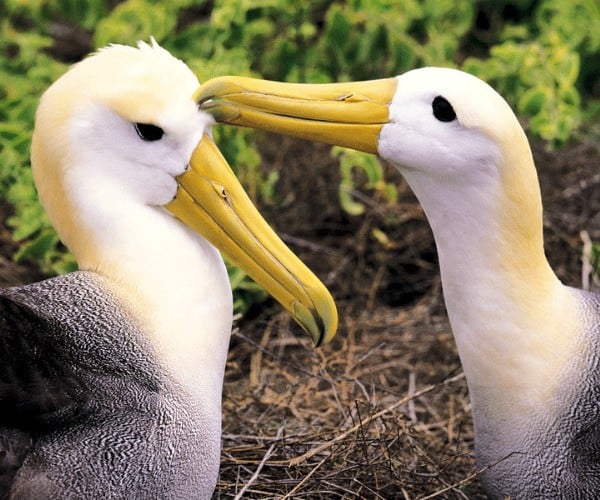 Fernandina Island, Punta Espinoza: 90%
Only a few hundred thousand years old, and free of invasive species, this is likely the most pristine island you’ll see in your lifetime. Its central (and active) volcano dominates the landscape, draped in recent lava flows all the way to the shore. Highlights include the flightless cormorant nesting sites, “marine iguana city”, penguins and if you’re lucky, the Galapagos hawk.
Fernandina Island, Punta Espinoza: 90%
Only a few hundred thousand years old, and free of invasive species, this is likely the most pristine island you’ll see in your lifetime. Its central (and active) volcano dominates the landscape, draped in recent lava flows all the way to the shore. Highlights include the flightless cormorant nesting sites, “marine iguana city”, penguins and if you’re lucky, the Galapagos hawk.
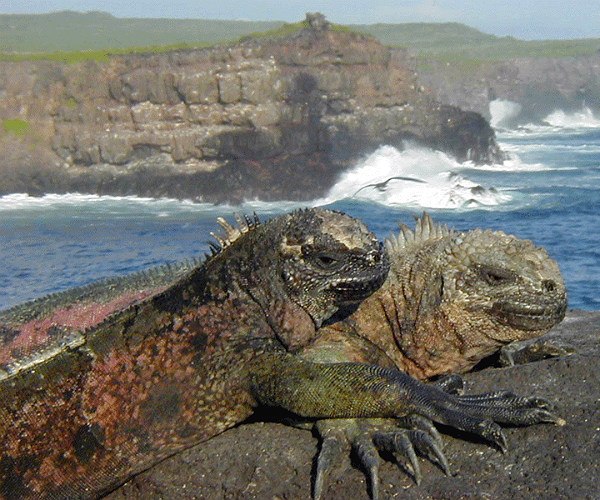 Isabela, Punta Vicente Roca: 86%
Here, the remnants of an ancient volcano form two turquoise coves with a bay that is well protected from ocean swells. This is a popular anchorage from which to take panga rides along the cliffs or to explore a partially sunken cave at the water’s edge. Blue-footed and nazca boobies perch along the sheer walls, while flightless cormorants inhabit the shoreline. One of the top rated snorkeling spots in Galapagos.
Isabela, Punta Vicente Roca: 86%
Here, the remnants of an ancient volcano form two turquoise coves with a bay that is well protected from ocean swells. This is a popular anchorage from which to take panga rides along the cliffs or to explore a partially sunken cave at the water’s edge. Blue-footed and nazca boobies perch along the sheer walls, while flightless cormorants inhabit the shoreline. One of the top rated snorkeling spots in Galapagos.
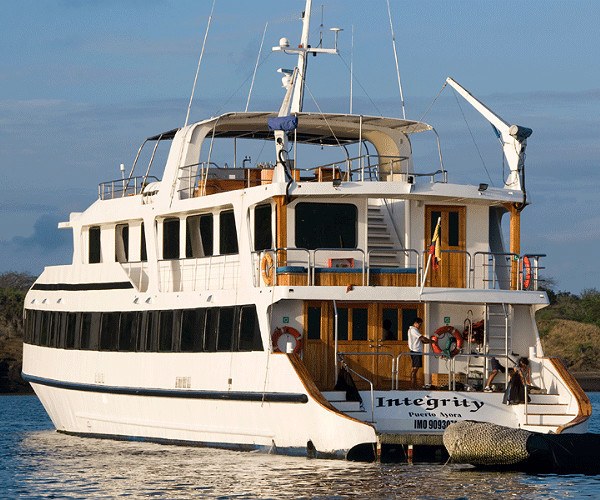 Genovesa Island, Prince Phillip’s Steps: 84%
This site is notable for its variety and abundance of birdlife including red-footed and nazca boobies, short-eared owls, red-billed tropicbirds, Galápagos swallows and Galápagos doves. Upon landing on a steep rocky stairway, visitors are treated to the site of small fur seal colony and a variety of marine life clinging to the rocks. There are great views of lava plains near the end of the trail.
Genovesa Island, Prince Phillip’s Steps: 84%
This site is notable for its variety and abundance of birdlife including red-footed and nazca boobies, short-eared owls, red-billed tropicbirds, Galápagos swallows and Galápagos doves. Upon landing on a steep rocky stairway, visitors are treated to the site of small fur seal colony and a variety of marine life clinging to the rocks. There are great views of lava plains near the end of the trail.
 North Seymour Island: 83%
From the small dock, the trail leads along the coast — past an area where marine iguanas nest — and then loops into the palo santo forest by the nests of frigatebirds and boobies. The frigatebirds rely on the fishing success of the blue-footed boobies for their survival, stealing their catches.
North Seymour Island: 83%
From the small dock, the trail leads along the coast — past an area where marine iguanas nest — and then loops into the palo santo forest by the nests of frigatebirds and boobies. The frigatebirds rely on the fishing success of the blue-footed boobies for their survival, stealing their catches.
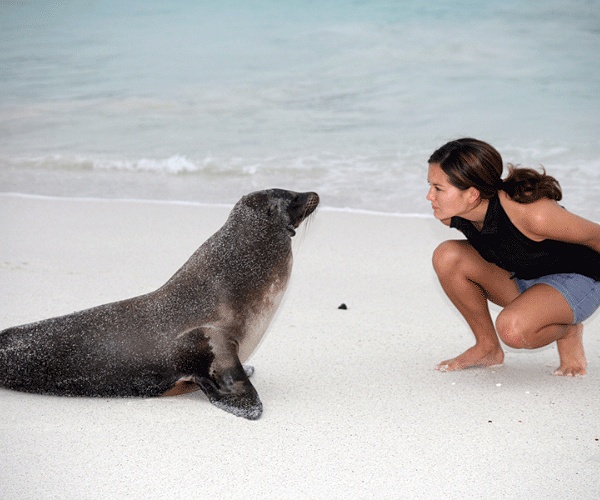 Champion Islet: 80%
Located just offshore of Floreana Island, Champion is considered as one of the most beautiful places on Galapagos for all snorkeling and diving fans and an excellent opportunity for dolphin spotting. It impresses already with its great diversity of exotic species on the land like blue-footed boobies and penguins, flamingos, exotic ducks and frigates. It is also one of the two last habitats of the very rare Floreana mockingbird.
Champion Islet: 80%
Located just offshore of Floreana Island, Champion is considered as one of the most beautiful places on Galapagos for all snorkeling and diving fans and an excellent opportunity for dolphin spotting. It impresses already with its great diversity of exotic species on the land like blue-footed boobies and penguins, flamingos, exotic ducks and frigates. It is also one of the two last habitats of the very rare Floreana mockingbird.
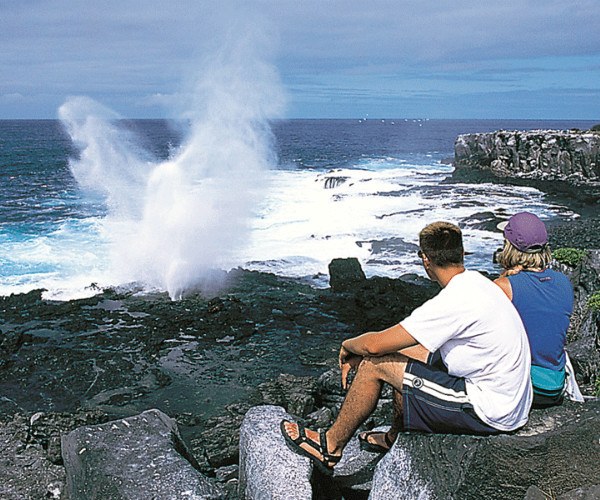 Floreana Island, Devil’s Crown: 80%
This volcanic crater is a perfect environment for coral, which attracts other marine life; making this one of the best snorkeling sites in the Galápagos. You may see sea lions, sharks, rays, tropical fish, eels and sea turtles. The outside of the crown is a haven for birds including boobies, pelicans, frigatebirds, and red-billed tropicbirds.
Floreana Island, Devil’s Crown: 80%
This volcanic crater is a perfect environment for coral, which attracts other marine life; making this one of the best snorkeling sites in the Galápagos. You may see sea lions, sharks, rays, tropical fish, eels and sea turtles. The outside of the crown is a haven for birds including boobies, pelicans, frigatebirds, and red-billed tropicbirds.
 The Galapagos archipelago consists of over 100 islands and islets scattered over a wide expanse of ocean 1,000km off the coast of Ecuador. The best way to experience the greatest diversity of landscapes, ecosystems and species is by small expedition cruise ship. Flying into Galapagos from the mainland, the standard itinerary is 7 nights / 8 days long – though shorter and longer cruises can be arranged. Not all itineraries are the same – in choosing your ship, it’s worth spending some time comparing itineraries. Ships vary in size from 8 to 100 passengers, with the vast majority carrying 20 or fewer guests. In recent years, economy class ships have been replaced by more comfortable luxury ships. The choice of ship in that category keeps on growing giving more options to those looking for a comfortable way to see what Darwin saw.
Marc Patry is Co-owner of Cultural & Natural Heritage (CNH) Tours. CNH Tours provides an unmatched personalized service in helping people organize a Galapagos holiday best suited to their particular interests.
If you would like to be a guest blogger on A Luxury Travel Blog in order to raise your profile, please contact us.
The Galapagos archipelago consists of over 100 islands and islets scattered over a wide expanse of ocean 1,000km off the coast of Ecuador. The best way to experience the greatest diversity of landscapes, ecosystems and species is by small expedition cruise ship. Flying into Galapagos from the mainland, the standard itinerary is 7 nights / 8 days long – though shorter and longer cruises can be arranged. Not all itineraries are the same – in choosing your ship, it’s worth spending some time comparing itineraries. Ships vary in size from 8 to 100 passengers, with the vast majority carrying 20 or fewer guests. In recent years, economy class ships have been replaced by more comfortable luxury ships. The choice of ship in that category keeps on growing giving more options to those looking for a comfortable way to see what Darwin saw.
Marc Patry is Co-owner of Cultural & Natural Heritage (CNH) Tours. CNH Tours provides an unmatched personalized service in helping people organize a Galapagos holiday best suited to their particular interests.
If you would like to be a guest blogger on A Luxury Travel Blog in order to raise your profile, please contact us.Did you enjoy this article?
Receive similar content direct to your inbox.

